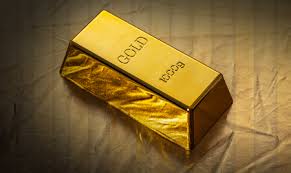Spot gold prices fell sharply to a three-week low on Monday amid a broad market sell-off. Investors shed bullion positions to cover losses elsewhere as fears of a global recession intensify.
Key Points
- Spot gold prices fell to $3,029.92, marking the lowest point since mid-March.
- U.S. gold futures inched up by 0.5%, reaching $3,051.00 per ounce.
- Recession concerns and market volatility prompted investor sell-offs.
- China imposed new tariffs and curbs, escalating the ongoing trade war.
- Central banks continue to purchase gold, signaling long-term bullish sentiment.
Market Context
Global markets are under pressure as investors grapple with intensifying recession fears. The sharp drop in spot gold prices reflects the rising urgency to cover losses across multiple asset classes. The broader stock market saw nearly $6 trillion wiped out from U.S. equities, while Japan’s Nikkei average plunged almost 9%.
Much of the current market volatility stems from escalating trade tensions. U.S. President Donald Trump’s sweeping tariff announcements shocked markets, prompting China to retaliate with 34% tariffs and export restrictions on rare earth metals. This has exacerbated global uncertainty, triggering risk-off behavior across financial markets.
Technical Insights
After losing over 3% on Friday, spot gold extended its decline Monday. Prices touched $3,029.92 during intraday trading, the lowest since March 13. The $3,030 zone has emerged as a critical support level for bullion. If this level fails to hold, technical analysts foresee a potential retest of the $3,000 psychological barrier.
Despite current headwinds, U.S. gold futures displayed resilience, ticking up by 0.5% to $3,051.00. Technical indicators suggest mixed sentiment, with short-term selling pressure battling long-term central bank demand.
Expert Quotes and Market Opinions
“There’s a lot of confusion in the market right now about whether things will calm down,” said Yeap Jun Rong, a market strategist at IG. “Tensions are very high right now, and many people don’t see a quick solution coming.”
Tim Waterer, Chief Market Analyst at KCM Trade, shared a longer-term view: “Central banks are still actively buying gold. This continued demand could help support gold prices over time.”
His remarks highlight the continued appeal of spot gold as a strategic asset for institutional investors.
Outlook and Conclusion
The ongoing volatility suggests that the path for gold will remain turbulent in the near term. However, central bank purchases and long-term safe-haven demand continue to provide underlying support. Traders should closely monitor economic data and geopolitical updates to gauge the next movement in spot gold prices.
For daily updates and live market insights, visit Daily Gold Signal.
To stay informed on gold trends and forecasts, check the Daily Gold Update.





